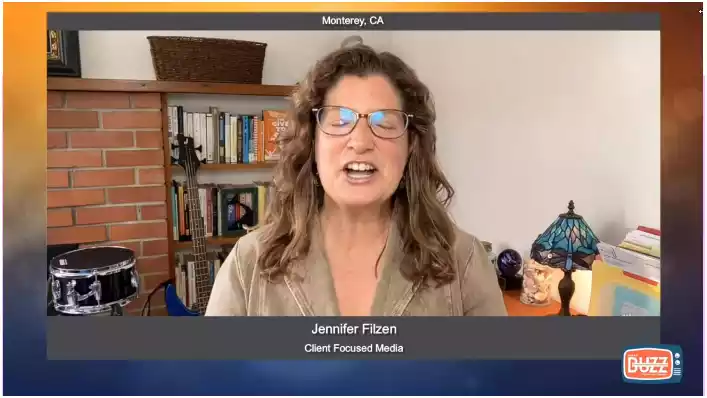Prior Authorization and Patient Care| Streamline Medical Processes
Delve into the vital link between prior authorization and patient care. Uncover the strategies to streamline healthcare processes and enhance medical outcomes. Explore the power of efficient authorization with Portiva - your key to elevated patient well-being. Dive in now!

Understanding what happens if a preauthorization or precertification is denied is crucial for navigating healthcare coverage. It typically means a requested medical service or medication is not immediately approved for coverage, prompting patients or providers to appeal the decision, provide additional information, or consider alternative treatments.
Dive in!
Table of Contents
Balancing Prior Authorization and Patient Care in Healthcare Systems
In the complex healthcare landscape, prior authorization is a critical yet often contentious step in the patient care continuum. As gatekeepers to treatment and therapy, prior authorization processes can affect the speed and efficiency of healthcare delivery. Understanding and streamlining these processes is beneficial and necessary for improving the overall quality of patient care.
Prior authorization is designed to manage costs and ensure patient safety by requiring providers to obtain approval from an insurer before delivering certain medical services. However, this well-intended procedure can sometimes lead to delays in care and added frustrations for patients and healthcare professionals. This blog explores the delicate balance between necessary oversight and unimpeded care delivery.
Understanding Prior Authorization
Health insurance companies often impose prior authorization to control costs and ensure that prescribed treatments or services are medically necessary. It acts as a preemptive check against overutilization or misuse of healthcare resources.
Common Healthcare Services Requiring Prior Authorization
Many services, such as advanced imaging procedures, complex surgeries, certain prescription medications, and physical therapy sessions, can trigger a prior authorization request. This check aims to prevent unnecessary procedures and ensure that patient treatment plans adhere to established guidelines.
Typical Prior Authorization Process
The prior authorization process varies by insurance company but typically follows these steps:
- The insurer receives a request from the provider with relevant medical information and treatment plans.
- After reviewing the request, the insurer decides whether to grant it or not based on predetermined criteria.
- The provider may file an appeal or pursue alternative treatment options if denied. If approved, the provider can proceed with treatment.
The Challenges of Prior Authorization
Delays in Patient Care and Treatment
One of the most significant issues with prior authorization is the potential delay in treatment it can cause. Patients are sometimes caught in the limbo of paperwork, waiting for their health insurance providers to green-light essential services. These delays can be detrimental, particularly for those with time-sensitive conditions.
Administrative Burden on Healthcare Providers
Healthcare providers bear the brunt of the administrative load that comes with prior authorization. From filling out forms to following up with insurance companies, the time and resources diverted to these tasks are substantial — detracting from direct patient care.
Negative Impact on Patient Satisfaction
The complications and potential delays associated with prior authorization can adversely affect patient satisfaction and trust in the healthcare system. When treatments are postponed or denied, patients may experience increased anxiety, pain, and a sense of helplessness. This can significantly impact their overall perception of care received.
Increased Healthcare Costs
While prior authorization aims to control costs, it can often have the opposite effect. The administrative burden and delays in treatment can result in higher medical expenses for both patients and healthcare providers. Patients might need more care or stay in hospitals due to delayed care, and providers may experience lost revenue from denied services.
Inconsistencies and Inefficiencies Across Insurance Providers
Different insurance providers may have varying criteria and processes for prior authorization, leading to inconsistencies and inefficiencies in the system. This can create confusion and frustration for patients and healthcare providers, adding to the already burdensome process.
Possible Alternatives to Prior Authorization
Some possible alternatives to traditional prior authorization include value-based care models and electronic prior authorization. Value-based care shifts the focus from cost to outcomes, potentially reducing the need for strict prior authorization processes. Electronic prior authorization uses technology to streamline the process, making it more efficient and less burdensome for healthcare providers.
Patient Advocacy and Education
One way to address the challenges of prior authorization is through patient advocacy and education. Patients can advocate for themselves and their care by understanding the prior authorization process and working with their healthcare providers to navigate it. Education on alternative options and potential costs can enable patients to choose their course of treatment with greater knowledge.
Collaboration between Insurers and Healthcare Providers
Collaboration between insurance companies and healthcare providers can also improve the prior authorization process. They can develop more standardized criteria and processes by working together, reducing inconsistencies and inefficiencies. This collaboration can also lead to a better understanding of the needs of both parties, potentially leading to more effective solutions.
Continued Efforts for Improvement
While there are challenges associated with prior authorization, efforts for improvement are underway within the healthcare industry. Steps are being taken to make the system more efficient and patient-friendly, from streamlining electronic processes to addressing inconsistencies across insurance providers. By continuing these efforts, we can work towards a smoother prior authorization process that better serves patients and healthcare providers. Overall, it is essential to continuously evaluate and improve the prior authorization process to ensure timely access to necessary care while controlling costs and minimizing administrative burdens. Together, with advocacy and teamwork, we can work toward a healthcare system that is more patient-centered and efficient.
The Importance of Streamlining Prior Authorization
Enhancing Access to Timely Care
Streamlining prior authorization procedures means quicker turnarounds for approval and fewer delays in providing critical services to patients. This timely access can dramatically change patient outcomes, particularly in acute or chronic conditions that require prompt attention.
Reducing Administrative Burden
Removing unnecessary complexity and increasing efficiency in prior authorization can significantly reduce the administrative burden on suppliers. As a result, they can concentrate more on patient care rather than administrative and regulatory compliance.
Improving Patient Satisfaction and Outcomes
Patient satisfaction naturally improves when the prior authorization process is smooth and unobtrusive. This increase in satisfaction often correlates with better overall patient outcomes and a more robust healthcare delivery system.
I'm very thankful for Portiva who I know is looking after my practice while I'm gone the virtual assistants can manage prescription refills, documents they can triage patients and just kind of answer administrative questions and they can handle a lot on their own. But also, they're very good about contacting me if there's any emergency or anything I need to attend to. So I'm very thankful for Portiva they can help almost any provider almost anywhere and it really allows for some good work-life balance as I'm getting to experience right now at my family farm so I'm very thankful for Portiva and I'm very happy to use their services"

Board Certified Family Medicine Physician

Portiva's Virtual Medical Assistant - I have all the support I need. There's somebody checking my email, any patient messages. Patients are still able to schedule and handle any scheduling issues and any kind of billing that needs to still go through. Portiva hands handles it all for me. I have support i have somebody that I can access 24/7 pretty much. It's all very seamless. If somebody has an emergency or needs a medication called in. I know that the va's at portiva will handle that for me.

Board Certified Family Medicine Physician

Strategies for Streamlining Prior Authorization
Utilizing Electronic Prior Authorization (ePA) Systems
Adopting ePA systems allows healthcare providers to submit prior authorization requests electronically, streamlining communication with insurers and reducing processing times. This technology integrates with electronic health records, making the process more efficient and less prone to errors.
Implementing Standardized Prior Authorization Criteria
Standardization of prior authorization criteria across the board can expedite the approval process. When providers and insurers operate under a common set of rules, there is less confusion and back-and-forth communication, making the entire process faster and simpler.
Enhancing Communication and Collaboration
Improving lines of communication and collaboration between healthcare providers and insurers can mitigate much of the traditional friction of the prior authorization process. Proactive engagement and clear expectations ensure that both parties work towards the shared goal of patient-centered care.
Success Stories: Organizations Streamlining Prior Authorization
The healthcare landscape is not without its success stories when reforming prior authorization. Many organizations have taken innovative approaches to this challenge.
- Case studies highlight how some health systems have integrated advanced data analytics to predict prior authorization outcomes, allowing for a more targeted and efficient process.
- Others have created specialized teams focusing exclusively on prior authorization, streamlining workflows, and improving approval times.
- There are also examples of insurers and providers collaboratively developing expedited tracks for prior authorization for low-risk treatments, reducing unnecessary delays in patient care.
Conclusion
Prior authorization is an essential component of the healthcare system but can also be a source of annoyance for patients and healthcare professionals. By understanding its purpose and implementing strategies to streamline the process, we can strike a balance between cost control and efficient delivery of care. Through collaboration, innovation, and technology, we can continue improving patient outcomes while reducing administrative burdens on healthcare providers. So, all stakeholders must work together towards a streamlined prior authorization process that benefits everyone involved in the healthcare journey. Let’s continue to find ways to enhance and improve this vital aspect of our healthcare system.
To learn more about utilization management that can enhance your medical practice. Discover more about Portiva and unlock a world of possibilities by visiting our homepage today!
- Prior authorization workflow efficiency
- Prior authorization in patient access services
- The impact of precertification services
- Reducing preauthorization costs
- Prior authorization challenges
- Obtaining prior authorization with ease
- Eliminate precertification denials
- Prior authorization guide
- Importance of prior authorization training
- Optimized prior authorization strategies
- Prior authorization support
- Why prior authorization training is crucial in healthcare
- The advantages of prior authorization support
- Maximizing prior authorization
- Prior authorization policy changes
- How outsourcing preauthorization works
- Solutions to precertification challenges
- Prior authorization services
- Prior authorization cost-benefit




